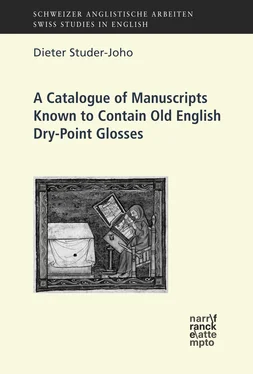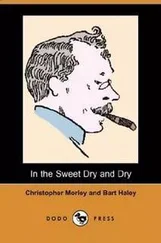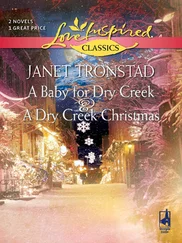3.2 Arthur Sampson NapierNapier, Arthur Sampson
In the 19 thc. OE glosses attracted major editorial efforts, after Franz Joseph Mone “launched”1 the subject by publishing a large number of OE glosses from Brussels, Bibliothèque royale de Belgique 1650Brussels, Bibliothèque royale de BelgiqueMS 1650 [K:8] (ALDHELM, Prosa de virginitate 2) and from the Hemeneumata glossaries in Brussels, Bibliothèque royale de Belgique 1828–1830 [K:9] in his Quellen und Forschungen zur Geschichte der teutschen Literatur und Sprache (1830: 310–443). Soon to follow were glosses from the “Épinal Glossary”Épinal, Bibliothèque municipale 72[K:114] (1838), the “Boulogne Prudentius”Boulogne-sur-Mer, Bibliothèque municipaleMS 189[2/K:7] (1839), the “Durham Ritual”Durham, Durham Cathedral LibraryA. IV. 19[K:106] (1840), the “Vespasian Psalter”London, British LibraryCotton Vespasian A. i[K:203] (1843), the “Leiden Glossary”Leiden, Leiden University Library Voss. Lat. Q. 69[K:A18] (1845) and the “Erfurt Glossaries”Erfurt, Wissenschaftliche Bibliothek Amplonianus 2° 42[K:10] (1847).3 From then on, OE glosses were published quite regularly in various places and their lexicographical material was amply included in Toller’s revision of Bosworth’s Dictionary (BT) , published between 1882 and 1889.
The first philological edition of dry-point glosses that I am aware of is Napier’s (1893) collation of the glosses in Salisbury, Cathedral 38Salisbury, Salisbury Cathedral LibraryMS 38 [31/K:378]. His collation has to be read in conjunction with Logeman’s (1891) edition, which had been compiled in a hurry and necessitated a number of corrections and additions. The dry-point material is included in a list of 28 glosses (Napier 1893: 208–209) that Logeman had missed; the dry-point glosses are marked with an asterisk, a practice that Napier continued to maintain in his later, and much larger collection of glosses (1900). Napier only briefly comments on the dry-point glosses. He refers to their size and the visual difficulties that they pose, when he writes:
Dass Logeman die mit einem stilus ohne tinte eingekratzten glossen, die übrigens viel grösser sind als die mit tinte geschriebenen, übersehen hat, ist kein wunder; in den meisten fällen sind sie nur bei günstiger beleuchtung und sehr genauer beobachtung sichtbar. (Napier 1893: 204)4
Napier does not express any opinion about the possibility that there might be more dry-point material that he did not see and he does not comment on whether he encountered further glosses that he could not decipher successfully, either. The near-invisibility of these glosses is unwittingly confirmed by Gwara, who – apparently not aware of Napier’s (1893) additions to Logeman’s (1891) edition – does not mention any dry-point glosses from Salisbury, Cathedral [31/K:378] in his expansive collection of ALDHELM glosses (Gwara 1993, 2001a and 2001b).
Despite the brevity of his elaborations, Napier already points out a recurring theme in dry-point descriptions: lighting is crucial to make the dry-point material visible. Unfortunately, Napier does not specify what means he had at his disposal to bring about that “favourable lighting” that was necessary to make the dry-point glosses in this particular MS visible. At the period, it was still common practice to have MSS ordered as inter-library loans. Napier mentions that he was allowed to “make use” of the Salisbury MS at the Bodleian Library.5 Handheld electric torches were not invented until a few years later, and it is not likely that Napier refers to lanterns or similar illumination devices, as their rather diffuse light may not have been of much help anyway. It is then likely that Napier had to rely on good weather and presumably sunshine to aid his reading efforts. It would be highly interesting to know, for instance, whether Napier was allowed to work in direct sunlight. After all, conservational concerns were not as pronounced as they have become in many libraries since then, although considerable differences do exist in conservational practice.6
| MS |
Napier (1900) |
Pages and footnotes where glosses are edited |
Quantity |
| [6/K:54] |
no. 18 |
184–185 |
40 |
| ″ |
no. 22 |
190 |
1 |
| [7/K:61] |
no. 4 |
xxxiii, n. 2(a) |
5 |
| [8/K:7*] |
no. 61 |
xxxiii, n. 2(d) |
5 |
| [9/K:94] |
no. 58 |
232 |
3 |
| [16/K:145] |
no. 50 |
xxi (no edition) |
unspecified |
| [19/K:252] |
no. 8 |
xxxiii, n. 2(b) |
24 |
| ″ |
no. 8 |
165, n. 45 and n. 77 |
2 |
| [20/K:254] |
no. 7 |
157, no. 66b |
1 |
| [21/K:266] |
no. 36 |
202 |
5 |
| [24/K:12] |
no. 11 |
xxxiii, n. 2(c) |
3 |
| [27/K:320] |
no. 1 |
115, n. 4449; 116, n. 4450 |
2 |
Table 1: Overview of dry-point glosses reported in Napier (1900).
Napier’s ultimate collection of glosses is his voluminous Old English Glosses: Chiefly Unpublished (1900), in which he published more than 8,500 OE ink glosses from 47 MSS, including a little more than 90 dry-point glosses from 10 different MSS. Concerning the dry-point glosses, he chose to present some of his findings in a rather confusing and involuntarily even obfuscating manner: Some of the dry-point glosses are part of his usual edition consisting of lists of pairs of L. lemmata and OE interpretamenta, some are only mentioned in the footnotes to those editions and others again are mentioned only in his short introductory chapter specifically concerned with dry-point glosses (Napier 1900: xxxiii).
Culling the dry-point glosses from the introduction, editions and footnotes throughout Napier (1900), we arrive at the overview presented in Table 1. Cambridge, CCC 285Cambridge, Corpus Christi CollegeMS 285[6/K:54] is the only MS for which Napier (1900: xxxiii) explicitly signals that he may have been able to decipher all extant dry-point glosses, and indeed, no further dry-point glosses have been reported from that MS since. He expressly does not claim the same for the other MSS:
… but in the case of the other MSS. I gave up the attempt: the deciphering of the scratched glosses was so trying to the eyes, moreover it was so frequently impossible to read them with certainty, that I preferred to confine myself to the properly written glosses. (Napier 1900: xxxiii)
As a consequence, later researchers were able to identify a substantial number of dry-point glosses in some of these MSS. From Cambridge, CCC 326 [7/K:61] alone, over 600 dry-point glosses were later edited by Meritt (1945), Page (1975b) and Gwara (1993, 1997a). Interestingly, Napier also mentions dry-point glosses in London, BL Cotton Cleopatra C. viii [16/K:145], but he does not edit any of them and, as far I was able to ascertain, no dry-point glosses have been edited from this MS since.
3.3 Herbert Dean MerittMeritt, Herbert Dean
The discovery of OE dry-point glosses by Napier did not succeed in spurring further interest in this type of glosses. Apparently, no-one cared to follow up on Napier’s leads and it was not until 1933 that a further edition of dry-point glosses was published by Meritt (1933). Meritt had been scouring European libraries for OE dry-point material in 1932 and 1933 (cf. Meritt 1945: vi), as he was convinced “that new glosses are to be found both in England and on the Continent” (1933: 305). A first result that he presented from this enterprise was Meritt (1933), an edition of 401 OE dry-point glosses in BEDA, Historia ecclesiastica gentis Anglorum from London, BL Cotton Tiberius C. ii [17/K:198], of which he later (1945: 6–14 [no. 4]) reprinted a slightly enlarged version to include 406 OE dry-point glosses.1 After publishing OHG dry-point glosses from 8 MSS that he had discovered accidentally while looking for OE ones (Meritt 1934), Meritt (1936) published an edition of more than 400 OE dry-point glosses in SEDULIUS, Carmen paschale and Epistola ad Macedonium from Cambridge, CCC 173Cambridge, Corpus Christi CollegeMS 173 [4/K:40], of which he later (1945: 29–38 [no. 28]) reprinted an updated version.
Читать дальше












